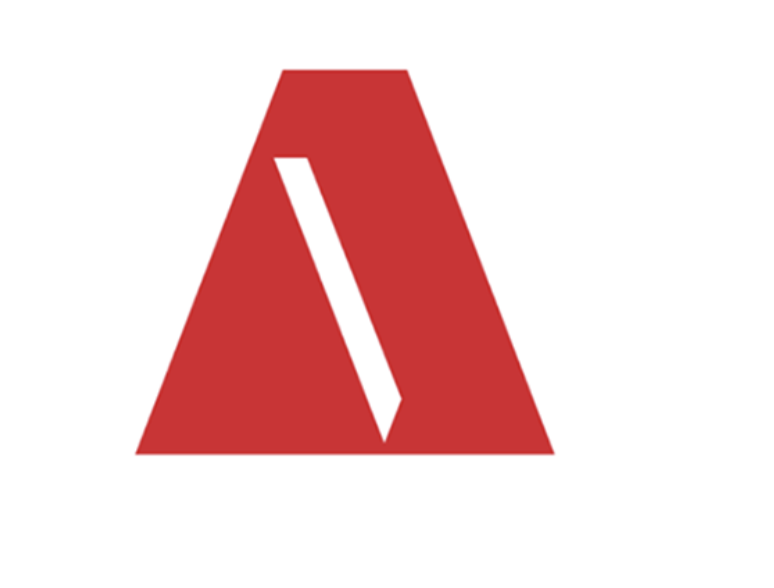- Services
- Industries
- Healthcare Software Development
- Telemedicine Software Development
- Medical Software Development
- Electronic Medical Records
- EHR Software Development
- Remote Patient Monitoring Software Development
- Healthcare Mobile App Development Services
- Medical Device Software Development
- Healthcare Mobile App Development Services
- Patient Portal Development Services
- Practice Management Software Development
- Healthcare AI/ML Solutions
- Healthcare CRM Development
- Healthcare Data Analytics Solutions Development
- Hospital Management System Development | Custom HMS & Healthcare ERP
- Mental Health Software Development Services
- Medical Billing & RCM Software Development | Custom Healthcare Billing Solutions
- Laboratory Information Management System (LIMS) Development
- Clinical Trial Management Software Development
- Pharmacy Management Software Development
- Finance & Banking Software Development
- Retail & Ecommerce
- Fintech & Trading Software Development
- Online Dating
- eLearning & LMS
- Cloud Consulting Services
- Healthcare Software Development
- Technology
- Products
- About
- Contact Us
OpenAI Unveils GPT-5.1-Codex-Max: Advanced Autonomous Coding Model with Extended Context Capabilities

OpenAI has officially released GPT-5.1-Codex-Max, a specialized artificial intelligence model engineered specifically for autonomous software development tasks. This release marks a significant advancement in agentic AI systems, representing OpenAI’s most capable coding assistant to date with breakthrough capabilities in handling complex, multi-hour development workflows.
Revolutionary Architecture and Technical Capabilities
Unlike general-purpose language models, GPT-5.1-Codex-Max is purpose-built for software engineering workflows with architectural innovations that enable unprecedented levels of autonomy. The model’s standout feature is its advanced compaction technology, which allows it to process and maintain coherent context across millions of tokens in a single development session.
This technical breakthrough addresses one of the fundamental limitations of previous AI coding assistants: context window degradation over extended tasks. In rigorous internal testing, GPT-5.1-Codex-Max successfully completed continuous coding tasks spanning over 24 hours, automatically managing its context window through intelligent compaction when approaching memory limits. The system maintains code coherence, project structure understanding, and debugging context throughout these extended sessions without requiring human intervention to reset or refresh its working memory.
The implications for enterprise development are substantial. Teams can now delegate entire refactoring projects, comprehensive debugging sessions, large-scale codebase migrations, and complex system maintenance operations to the AI, confident that it will maintain context and deliver consistent results across multi-day agent loops.
Performance Benchmarks and Efficiency Gains
Quantitative evaluations demonstrate GPT-5.1-Codex-Max’s superiority over its predecessors. On the industry-standard SWE-bench Verified assessment—a rigorous benchmark testing real-world software engineering problem-solving—the model achieves a 77.9% accuracy rate, representing a 4.2 percentage point improvement over the previous GPT-5.0 Codex version’s 73.7% score.
Perhaps more impressive than raw accuracy improvements are the efficiency optimizations. GPT-5.1-Codex-Max accomplishes these superior results while consuming 30% fewer “thinking tokens,” the computational resources the model uses for internal reasoning. This efficiency directly translates to reduced operational costs for developers and organizations, making advanced AI-assisted development more economically viable at scale.
Frontend development tasks particularly showcase these efficiency gains. When generating modern user interfaces, GPT-5.1-Codex-Max requires approximately 27,000 thinking tokens compared to 37,000 for earlier models—a 27% reduction. The model also requires fewer tool calls during development workflows and produces more optimized, production-ready code with less redundancy.
Security Architecture and Responsible Deployment
OpenAI acknowledges the dual-use nature of advanced coding AI systems. While GPT-5.1-Codex-Max offers powerful capabilities for legitimate software development, the company recognizes that such tools could theoretically be misused for cybersecurity attacks, including automated vulnerability discovery, exploit development, or malicious code generation.
To address these concerns, OpenAI has implemented multiple security layers:
Sandboxed Execution Environment: By default, GPT-5.1-Codex-Max operates within a secure, isolated sandbox. All file operations are confined to designated workspaces with no access to broader system resources. Network connectivity remains disabled unless explicitly activated by authenticated users, preventing unauthorized data exfiltration or external communications.
Prompt Injection Protections: OpenAI specifically warns that enabling internet connectivity introduces vulnerabilities to prompt injection attacks, where malicious actors could manipulate the model’s behavior through crafted web content. The company strongly recommends maintaining network restrictions in production environments unless absolutely necessary for specific use cases.
Abuse Monitoring and Disruption: OpenAI’s Trust and Safety team actively monitors for misuse patterns. The company reports that while theoretical attack vectors exist, they have not observed meaningful abuse at scale. OpenAI has already disrupted multiple cyber operations that attempted to misuse the model for malicious purposes, though specific details remain confidential for operational security reasons.
Human-in-the-Loop Verification: Despite the model’s autonomous capabilities, OpenAI emphasizes that GPT-5.1-Codex-Max should complement rather than replace human code review processes. The system generates comprehensive terminal logs and cites all tool calls for transparency, but developers should review AI-generated code before deployment to production systems, particularly for security-critical components.
Enterprise Adoption and Real-World Impact
GPT-5.1-Codex-Max is currently available through OpenAI’s Codex platform for ChatGPT Plus, Pro, Business, Edu, and Enterprise subscription tiers. API access for programmatic integration into development workflows and CI/CD pipelines is scheduled for release in the coming weeks.
Internal adoption metrics at OpenAI provide compelling evidence of the model’s value proposition. Approximately 95% of OpenAI’s engineering staff actively uses Codex on a weekly basis—a remarkably high adoption rate that speaks to the tool’s practical utility. More significantly, engineers utilizing Codex demonstrate a correlation with approximately 70% more pull requests shipped, suggesting substantial productivity improvements when AI assistance is integrated into development workflows.
Market Context and Competitive Landscape
GPT-5.1-Codex-Max enters an increasingly competitive market for AI-powered coding assistants. GitHub Copilot, Anthropic’s Claude with Code Execution, Google’s Gemini Code Assist, Amazon’s CodeWhisperer, and numerous startups all vie for developer mindshare. What distinguishes OpenAI’s latest offering is the combination of extended autonomous operation, advanced context management, and integration with the broader ChatGPT ecosystem.
The model’s ability to handle multi-hour autonomous coding sessions positions it uniquely for enterprise-scale codebase modernization projects—think migrating legacy systems to modern frameworks, comprehensive security vulnerability remediation, or large-scale API refactoring—tasks that previously required significant human oversight and coordination.
Implementation Considerations for Development Teams
Organizations considering GPT-5.1-Codex-Max adoption should evaluate several factors:
Infrastructure Requirements: The model’s computational demands, while more efficient than predecessors, still require consideration for API rate limits and cost modeling, especially for high-volume usage.
Workflow Integration: Maximum value comes from integrating Codex into existing development workflows—IDE plugins, CI/CD pipelines, code review processes, and documentation generation systems.
Team Training: Developers need guidance on effective prompt engineering for coding tasks, understanding when to leverage AI assistance versus traditional development approaches, and maintaining code quality standards with AI-generated contributions.
Security Policies: Organizations must establish clear policies around AI-generated code review, testing requirements, and acceptable use cases, particularly for security-sensitive or regulated applications.
Future Implications for Software Development
GPT-5.1-Codex-Max represents tangible progress toward OpenAI’s vision of reliable AI coding partners that meaningfully augment human developer capabilities. As these systems continue evolving, the nature of software engineering work will likely shift from writing individual lines of code toward higher-level architectural thinking, system design, and orchestrating AI agents to implement detailed specifications.
The model’s extended context capabilities and autonomous operation represent a stepping stone toward more ambitious goals: AI systems that can independently manage entire software projects, coordinate with human teams through natural language, and maintain long-term understanding of complex codebases spanning millions of lines across dozens of repositories.
For now, GPT-5.1-Codex-Max offers development teams a powerful tool for accelerating routine coding tasks, managing technical debt, and scaling engineering capacity—while maintaining the human judgment and oversight essential for building reliable, secure software systems.
About OpenAI’s Codex Platform: Codex represents OpenAI’s specialized infrastructure for AI-assisted software development, providing developers with advanced code generation, debugging, refactoring, and documentation capabilities integrated with the ChatGPT ecosystem.
Recent Posts
- Non-Human Identities Crisis: How AI Agents Are Transforming Enterprise Cybersecurity and Identity Management at Unprecedented Scale
- OpenAI Unveils GPT-5.1-Codex-Max: Advanced Autonomous Coding Model with Extended Context Capabilities
- AI Safety Under Pressure: What Every Software Developer Needs to Know About Adversarial Prompt Attacks
- The AI Exposure Gap: Your Organization’s Invisible Security Crisis
- ERP vs CRM vs Custom Platform — What Does Your Business Actually Need?

